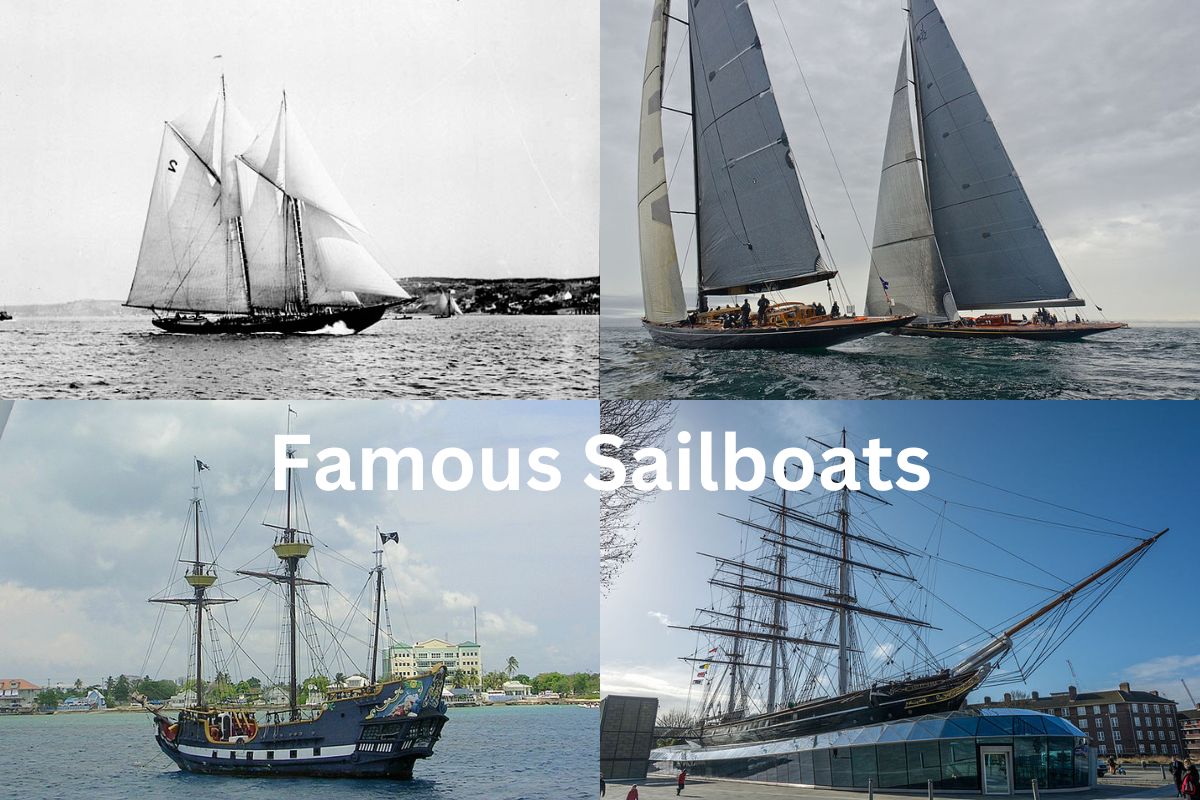For generations, sailboats have been a vital form of transportation and a source of entertainment. Several sailboats have gained notoriety because to their historical significance, outstanding speed and performance, or association with famous persons or events.
There are several renowned sailboats that have made an indelible effect on history and popular culture, ranging from the legendary ships that took explorers over the seas to the high-performance yachts that compete in prestigious races.
This article will look at 13 renowned sailboats, from historic ships to modern racing yachts.
Famous Sailboats
1. America’s Cup Yachts
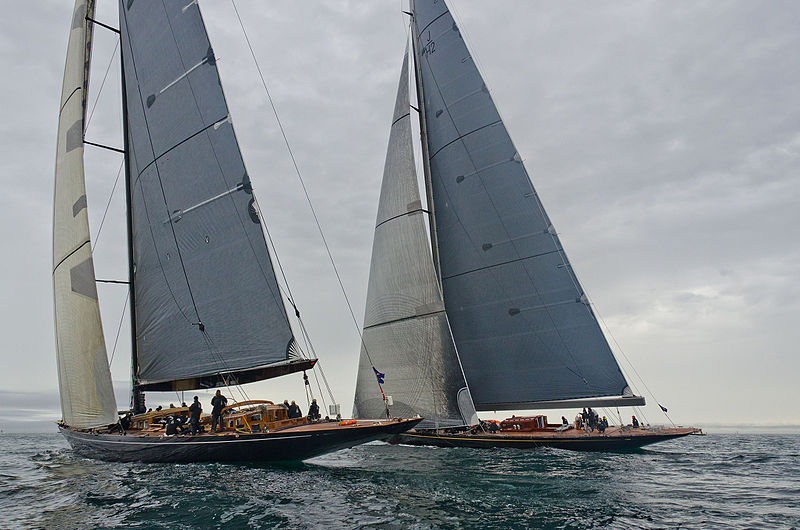
America’s Cup sailboats are high-performance sailboats that compete in the America’s Cup, a renowned yacht race that has been held since 1851. Teams from all around the world compete for the prized trophy, which is named after the first winning boat, America.
The America’s Cup boats have grown over time to become some of the most advanced sailboats in the world. Foiling monohulls are the most recent iterations of the boats, which use innovative technology to raise the boat out of the water and reduce drag, allowing for higher speed and performance.
Also Read: Famous Yachts
The AC72 Oracle Team USA, which was used in the 2013 America’s Cup and had hydrofoils that allowed it to reach speeds of up to 50 miles per hour, is one of the most famous America’s Cup boats.
Another outstanding boat with modern technology and engineering is the AC75 Emirates Team New Zealand, which was used in the 2021 America’s Cup.
Aside from these modern boats, the America’s Cup has a long history of iconic sailboats, such as the J Class yacht Ranger, which competed in the 1937 America’s Cup and was noted for its amazing speed and elegance.
The America’s Cup boats are among the most creative and remarkable sailboats in the world, and their history and legacy inspire sailors and sailing aficionados all over the world.
2. Endeavour
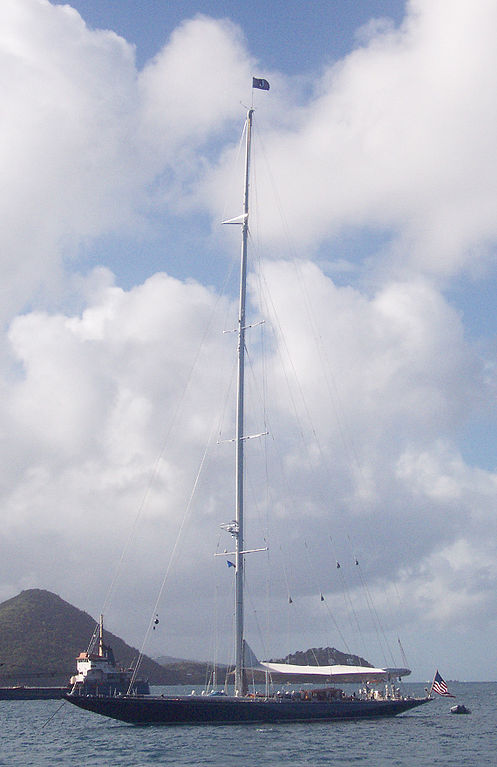
Endeavour is a notable sailboat that was built in 1934 after Sir T.O.M. Sopwith commissioned it. The yacht was designed by naval architect Charles E. Nicholson and built in Gosport, England by Camper and Nicholsons.
Endeavour was a J Class yacht, which was a type of large sailboat used in the 1930s America’s Cup races. The J Class yachts were among the most opulent and elegant of their period, and Endeavour was no exception. The yacht was famous for its stylish lines, fast speed, and sumptuous cabin.
Endeavour was designed to participate in the 1934 America’s Cup, but was defeated by the American boat Rainbow. Despite its demise, Endeavour became one of the most famous and iconic sailboats of its era, racing in a variety of regattas and events during the 1930s.
Endeavour went into disrepair after WWII and was eventually abandoned. But, in the 1980s, Elizabeth Meyer and her husband refurbished the yacht and returned it to its former beauty.
The Endeavour Foundation now owns Endeavour, which is utilized for sailing charters and events, as well as racing in regattas and other sailing competitions.
3. Cutty Sark
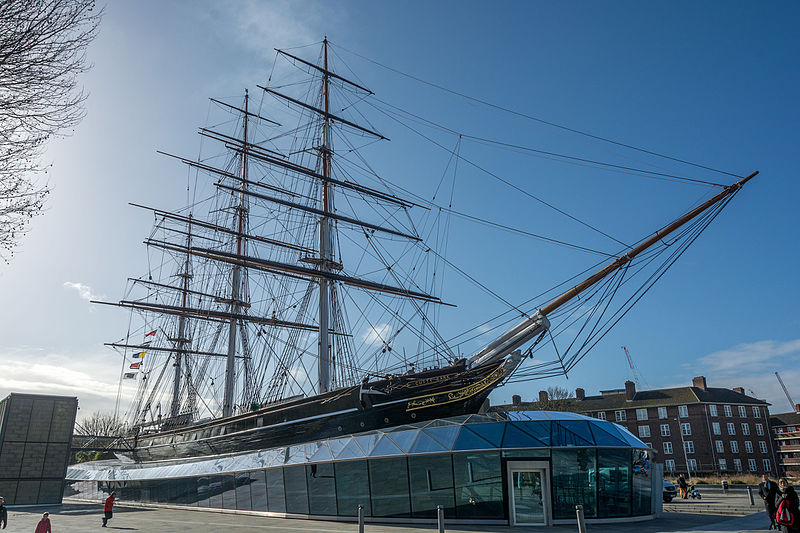
The Cutty Sark is one of the most famous clipper ships in history. It was constructed in Scotland in 1869 and was primarily used to transport tea from China to England. It gets its name from Robert Burns’ poem “Tam o’ Shanter,” which features a mythological character.
The Cutty Sark was known for her speed and competitiveness, frequently racing other clipper ships across the ocean to transport cargo. It visited China eight times, and on one of them, it broke the record for the fastest journey from Shanghai to London, lasting only 107 days.
After its cargo-carrying days were through, the Cutty Sark was used as a training ship and, subsequently, as a museum ship. It is currently on exhibit in Greenwich, England, where visitors can inspect the ship’s decks, cabins, and cargo holds.
The Cutty Sark has become both a symbol of British maritime tradition and one of London’s most well-known tourist attractions.
4. HMS Bounty
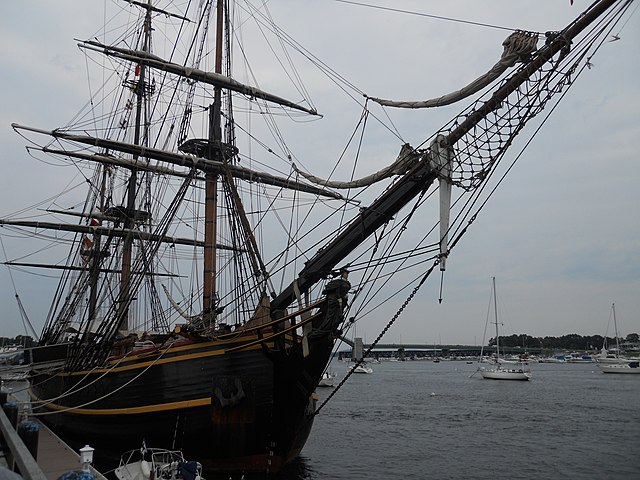
The HMS Bounty was a British Royal Navy ship most remembered for the 1789 on-board mutiny. The Bounty was built in 1784 to transport Tahitian breadfruit to the West Indies as part of a British effort to cultivate a new crop for enslaved workers.
Conflicts between the crew and the ship’s commander, William Bligh, arose during the voyage to Tahiti, and in April 1789, a gang of mutineers led by Fletcher Christian seized control of the ship, leaving Bligh and many of his fervent supporters alone in a tiny boat.
After the mutiny, the Bounty continued to sail, with Christian and the mutineers eventually settling on Pitcairn Island in the South Pacific. To avoid detection, the ship was burned and sunk.
For many years, the fate of the mutineers and their successors on Pitcairn Island remained unknown, but academics were able to piece together the story of the mutiny and its aftermath in the twentieth century.
The narrative of the HMS Bounty and her mutiny has inspired countless books, films, and other works of popular culture, and the ship has become an iconic emblem of the dangers and perils of exploration and adventure.
5. Nina, Pinta, and Santa Maria
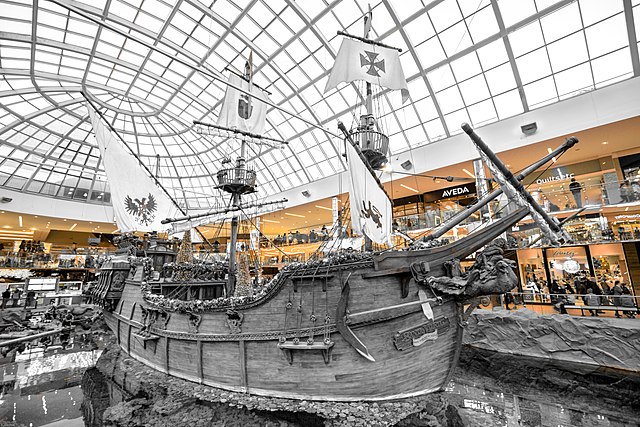
Christopher Columbus utilized three legendary sailboats on his maiden voyage to the Americas in 1492: Nina, Pinta, and Santa Maria. These were caravels, which were small, nimble sailing ships popular among European explorers during the Age of Discovery.
The Nina was the smallest of the three ships, with a length of roughly 50 feet. The Pinta was slightly longer, measuring around 70 feet, while the Santa Maria was the longest, measuring around 85 feet.
While these ships are well-known for their involvement in Columbus’ expedition, their exact specifications are unknown. Historians and archaeologists, on the other hand, have made educated judgments regarding their design and construction based on historical records and archaeological evidence.
Replicas of the Nina, Pinta, and Santa Maria can now be found in ports all over the world, and they are frequently employed as museum ships or for instructional purposes. These ships are significant in the history of exploration and the advancement of sailing technology.
6. Gypsy Moth IV
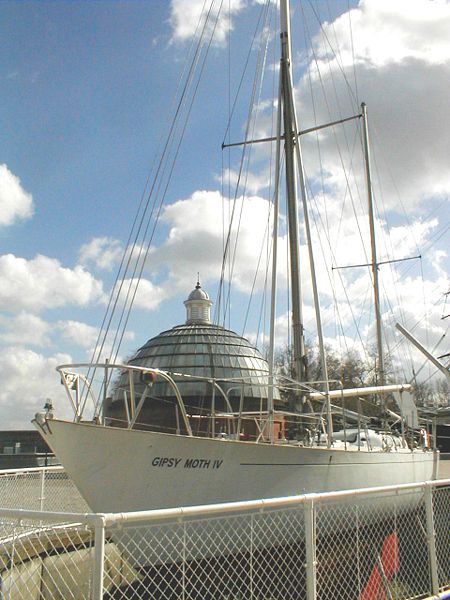
Gypsy Moth IV is a legendary sailboat that was sailed alone around the world by British sailor Sir Francis Chichester in 1966-67. Chichester became the first person to sail solo around the world, passing via the three capes of the Cape of Good Hope, Cape Leeuwin, and Cape Horn.
Gypsy Moth IV was a 54-foot ketch designed by John Illingworth and built by Camper and Nicholsons in Gosport, England in 1966. The yacht was named after Chichester’s original Gypsy Moth, a small dinghy he used to sail solo across the Atlantic in 1960.
Chichester encountered various problems during his round of the globe, including equipment failures, storms, and extended periods of isolation. He was able to finish the expedition in just over nine months, breaking the previous record for the fastest solo circumnavigation.
Gypsy Moth IV became an icon of sailing and adventure after the expedition, and it was used for other voyages and events throughout the years. The boat was restored extensively in 2004, and it is now housed in the National Maritime Museum in Cornwall, England.
Gypsy Moth IV is now a symbol of the bravery, determination, and adventurous spirit that lies at the core of sailing and exploration.
7. HMS Victory
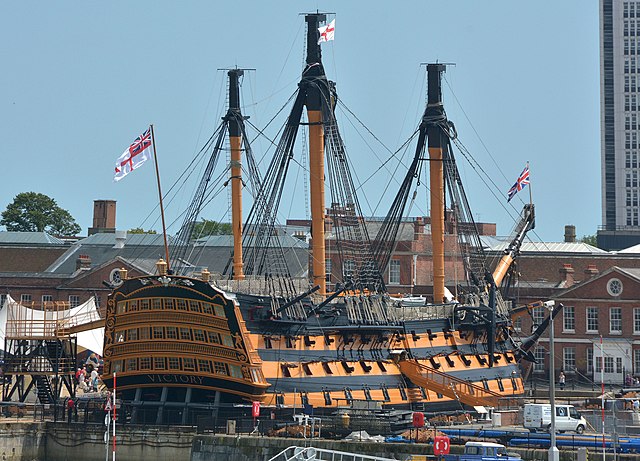
HMS Victory is a well-known British ship built in 1765 that played an important role in naval history. The ship is best remembered for its role as the flagship of Admiral Horatio Nelson, a famed British naval leader, at the Battle of Trafalgar in 1805.
The HMS Victory was a 104-gun first-rate line ship with a length of 69.3 meters and a weight of 3,500 tons. It carried roughly 800 warriors and was well armed with cannons.
The ship was essential in various naval wars during the late 18th and early 19th centuries, notably the American War of Independence and the French Revolutionary Wars.
The British victory over the combined French and Spanish fleets at the Battle of Trafalgar was aided by the HMS Victory. Nelson famously led the British fleet from the deck of the HMS Victory, instilling courage and leadership in his men.
Despite this, Nelson was killed in the battle, and the ship was severely damaged, with over 100 crew members killed or injured.
The HMS Victory was repaired and returned to service following the fight, but it was eventually retired in 1812.
The ship is now kept as a museum at Portsmouth, UK, and is one of the most famous and well-known historic ships in the world. It is a memorial to the United Kingdom’s naval legacy, as well as a symbol of the country’s long and prosperous maritime history.
8. The Mayflower
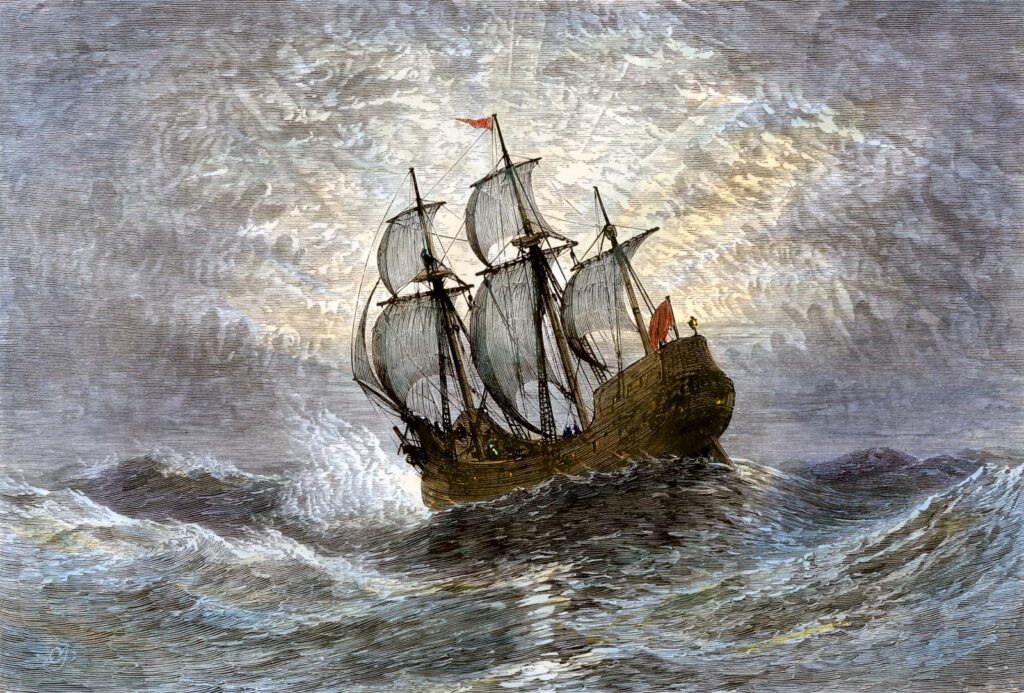
In 1620, the Mayflower transported the first English Puritans, also known as the Pilgrims, from Plymouth, England to the continent of North America.
The Mayflower voyage and the passengers on board played a significant part in the early colonization and settlement of the Americas. The Pilgrims set off for the New World in pursuit of religious liberty and a better way of life.
The ship went out with the intention of mooring in northern Virginia, but due to terrible weather and navigational errors, it ended up in what is now the state of Massachusetts, in the location that is now home to the city of Plymouth.
The Pilgrims created the Plymouth Colony, the first successful and long-lasting English settlement in New England. Plymouth was in the southeastern part of Massachusetts.
The voyage of the Mayflower and the Pilgrims’ settlement of the New World are significant events in American history, and they are commemorated each year on Thanksgiving.
9. Jolly Roger
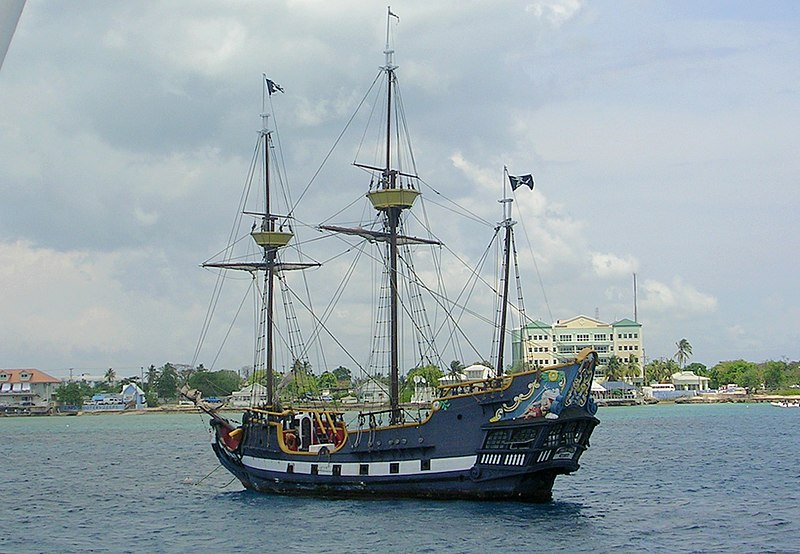
The Jolly Roger is a well-known pirate ship that is typically associated with the classic pirate ship image, complete with black sails and a skull-and-crossbones flag. While the Jolly Roger is a made-up character, it has become a symbol of piracy and adventure.
The Jolly Roger’s origins are unknown, however it is thought to have been employed by pirates in the 18th century to frighten their foes. A white skull on a black backdrop was frequently depicted on the flag, with crossed bones beneath it.
The Jolly Roger became a symbol of pirate life, with numerous stories and legends surrounding the flag and the ships that flew it. While pirate ships were generally small, quick vessels capable of navigating shallow seas and surprising their targets, the image of the Jolly Roger has come to represent the larger-than-life pirates of popular culture.
The Jolly Roger is still an iconic picture in the world of sailing and adventure today, and it is frequently used as a symbol of revolt and independence.
10. Bluenose
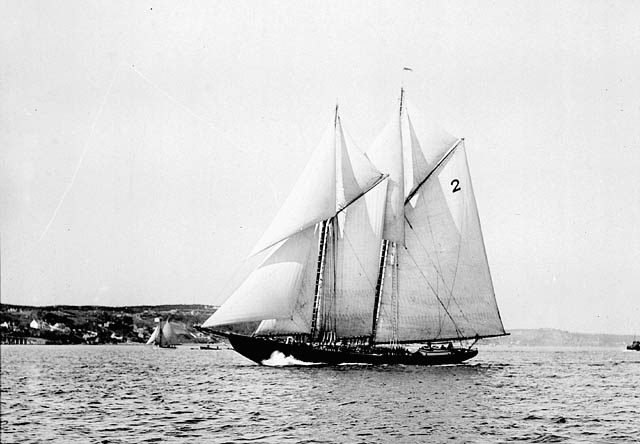
Bluenose is a well-known yacht that was built in Nova Scotia, Canada, in 1921. The boat was utilized for both fishing and racing, and it went on to become one of the most successful racing schooners of its time.
Bluenose was designed by Nova Scotia naval architect William Roué and built at the Smith and Rhuland shipyard in Lunenburg, Nova Scotia. The boat was named from the moniker given to Nova Scotians, who were often referred to as “bluenosers” because to the blue noses caused by the cold Atlantic air.
Bluenose was mostly used for fishing, although it also participated in a number of sailing races during its lifespan. The boat was noted for its speed and performance, and it was a multiple winner of the International Fishermen’s Trophy for schooner racing.
Bluenose was sold to a Caribbean rum-runner after many years of service and was eventually wrecked off the coast of Haiti in 1946. The boat’s legacy, however, continues on, and it is an important emblem of Nova Scotia’s maritime tradition.
The Oland Brewery in Halifax, Nova Scotia, created a copy of Bluenose in 1963, and it has been utilized for numerous occasions and promotions since since. The Bluenose II is now a prominent tourist attraction in Nova Scotia, and it is regarded as one of Canada’s most famous and cherished sailboats.
11. HMS Beagle
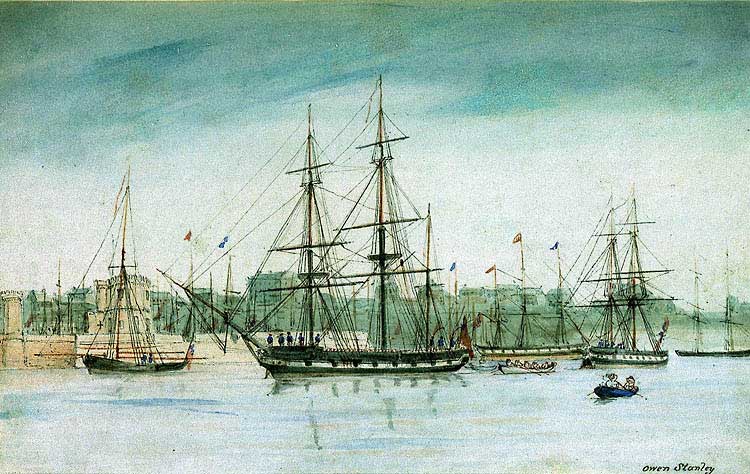
The HMS Beagle was a British Royal Navy ship most known for its role in Charles Darwin’s voyage to the Galapagos Islands from 1831 to 1836. The Beagle was a 90-foot-long and 24-foot-wide two-masted brig.
Darwin was a young naturalist at the time, and his voyage on the Beagle allowed him to collect a tremendous amount of data and specimens that led to the formation of his theory of evolution.
Throughout its journey, the Beagle also conducted shoreline surveys throughout South America, including Brazil, Argentina, and Chile.
The Beagle’s trip was not without incident, with the ship becoming aground on several occasions and suffering hazardous weather conditions.
Notwithstanding these challenges, Darwin’s voyage was a success, and his observations and discoveries revolutionized scientific understanding of the natural world.
After her return to England, the Beagle was used for a variety of purposes, including as a coastguard vessel and a customs ship. It was eventually sold and demolished in 1870.
The HMS Beagle is known today for its role in one of history’s most important scientific expeditions.
A replica of the ship has been built in the English town of Woolwich, and additional monuments and museums dedicated to Darwin and his work can be found all over the world, most notably the Darwin Centre at the Natural History Museum in London.
12. Shackleton’s Endurance
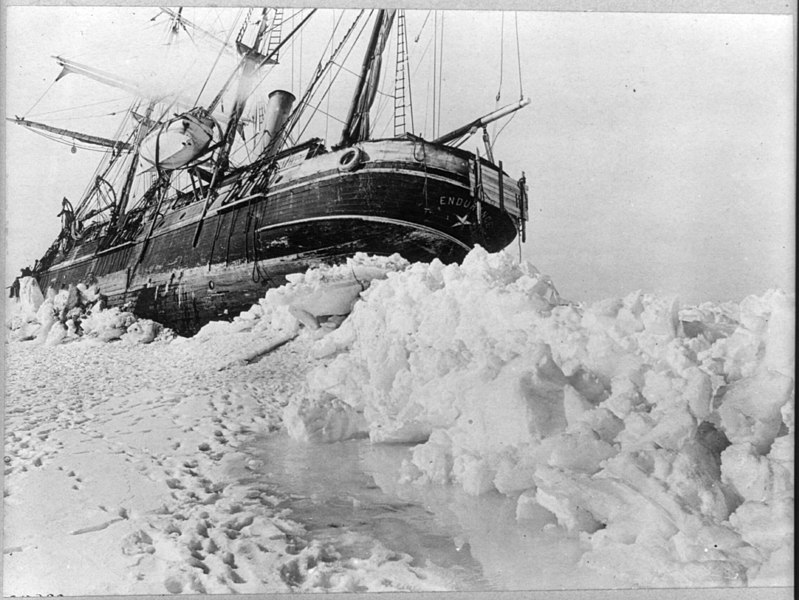
Ernest Shackleton’s Endurance is a legendary sailboat that he utilized on his 1914-16 Antarctic expedition. The ship became engulfed in ice and eventually sank, but the crew survived and returned to civilization.
Endurance was built in Sandefjord, Norway in 1914 by the Norwegian shipyard Framnaes. The ship was built to be durable and powerful enough to resist the terrible Antarctic conditions, and it was called after the Shackleton family’s slogan, “Through Endurance We Conquer.”
Endurance became caught in ice in the Weddell Sea during the mission, and the crew was forced to abandon ship after many months. The crew then lived on the ice for several months before going out in lifeboats to reach Elephant Island, an isolated island in the South Shetland Islands.
Shackleton and a small group of crew members set out in a lifeboat from Elephant Island to South Georgia Island, where they hoped to find relief. The crew was eventually rescued after a perilous trek across the Southern Ocean to South Georgia Island.
Notwithstanding the loss of Endurance, Shackleton’s mission is regarded as one of the most incredible feats of endurance and survival in exploration history.
Over the years, the narrative of the Endurance and its crew has inspired many sailors and adventurers, and it has become an iconic symbol of the spirit of exploration and adventure.
13. Bounty II
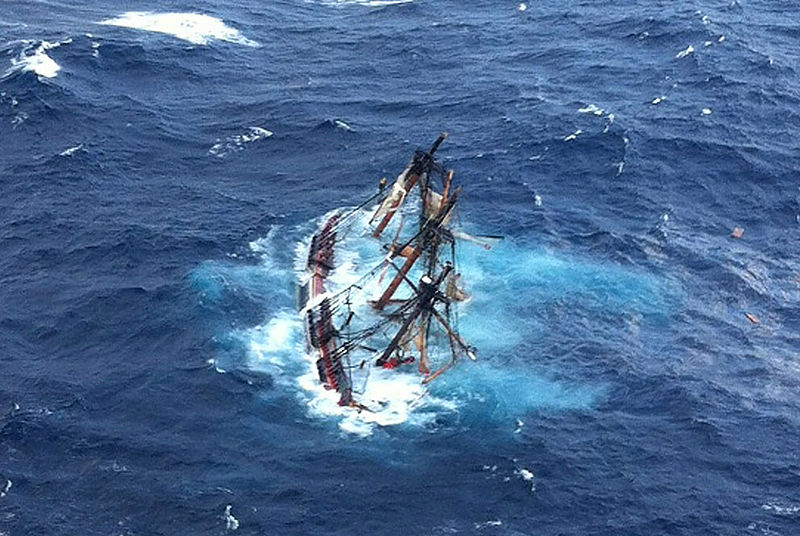
Bounty II was a replica of the HMS Bounty, a British naval vessel famed for its 1789 mutiny against its captain, William Bligh, headed by Fletcher Christian.
The replica was built in 1960 for the movie “Mutiny on the Bounty,” which starred Marlon Brando as Fletcher Christian and Trevor Howard as Captain Bligh.
MGM Studios in California developed Bounty II, which was supposed to look like the original HMS Bounty. The boat measured 120 feet long and was outfitted as a three-masted square-rigged ship. Bounty II was used for many events and promotions after the film was completed, including sailing in the Tall Ships Race.
Bounty II was purchased in 1985 by a consortium of investors who intended to utilize it as a floating museum and tourist attraction. The boat was modified and used for a variety of competitions and sail training programs.
Bounty II was caught in Hurricane Sandy off the coast of North Carolina in 2012 and sank, killing two crew members. The ship’s sinking was a tragic incident, but it served as a reminder of the risks of sailing and the significance of water safety and readiness.
